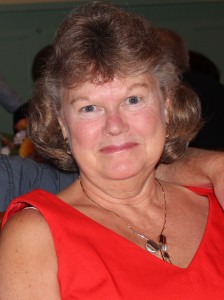Today if you wanted to find out more about Diophanti Alexandrini you might start by going to Wikipedia to read about this Greek mathematician. You can even begin with Google Images to see pages from his 1670 book on Arithmetic. The woman who introduced me to photo research at the beginning of my career brought me to Harvard University’s Houghton Library. Here we waited patiently until the librarian retrieved the original 17th century Greek edition from the stacks and carefully placed it on a velvet-covered podium for our review. How thrilling to be allowed to turn the pages of a book more than 400 years old!
Here’s my advice for new Photo Researchers:
Don’t Miss Seeing the Originals
Early in my career a good deal of my research time was spent searching through primary source material: broadsides at Antiquarian Societies, posters, postcards, bound copies of Harper’s Weekly, Puck, Godey’s Lady’s Books, original engravings and black and white prints.
The Museum of American History at the Smithsonian owns unique artifacts from the earliest presidential campaigns. Planning a trip to Washington, DC I asked and was given a tour of the political history memorabilia not on view to the public. They brought out trade cards with portraits of President Cleveland and his wife, photographs of ten foot tin balls rolling down the street to promote Whig party candidates, matchbox covers with Locofoco Democratic party slogans, little brass buttons made for George Washington’s 1789 inauguration, Teddy Roosevelt bandannas, etc. The most difficult decision was deciding which objects to have photographed for an American government project.
Have you ever read Faith Ringgold’s childhood story, Tar Beach? Over the years I have seen many photographs of Ringgold’s story quilts. It wasn’t until I had the opportunity to see “Bitter Nest #5: The Homecoming” at the Currier Museum of Art that I could truly appreciate that Ringgold’s quilts are beautiful in the own right with exotic colors and patterns. After hand sewing the pieces, Ringgold applied her acrylic painting on top of the cloth right over the stitches! It’s so much more impressive when you are standing in front of this large work of art than when you bring up a digital version online.
Become a Documentalist
I remember being told that in France Photo Researchers consider themselves documentalistes highlighting their research skills. Can you image being fortunate enough to spend several days in the Bibliotheque Nationale in Paris? One of my colleagues went there to review their unique collection of medieval books of hours. Seeing the brilliant details of the original illustrations with silver and gold leafing made it very clear to her why the images in these manuscripts were called illuminations.
Learn to Be Visually Literate
One important skill for Photo Researchers is to learn to comprehend and appreciate the visuals created by others. Don’t be afraid to ask questions and go straight to the source.
Looking at a science magazine a few years ago I came across an unusual photograph of brain cells from a transgenic mouse which were called “brainbows”. Out of curiosity I called the source, Dr. Jeff Lichtman at Harvard’s Center for Brian Science. Serving as Co-President of ASPP New England at the time, I asked if we could come in as a group to learn more about this interesting work. Not only did Dr. Litchtman present a slide show with a brief history on visualizing the nervous system, he also allowed us into the lab where his graduate students were using a dissecting microscope with laser scanning.
Check Out New Images Sources
Last summer I traveled to Westminster, Massachusetts for a local fair. Never one to miss an opportunity to explore a historical society, I dropped in to see what treasures they had. To my surprise I found they had a collection of lovely portrait miniatures by sisters Sarah and Eliza Goodridge ca. 1830. Among Sarah Goodridge’s most interesting and personal works is a miniature portrait of her own bared breasts, entitled Beauty Revealed. The original of this work is now in the Metropolitan Museum of Art in New York. Executed in 1828, it was presented by the artist to her close friend, correspondent, and occasional subject, Daniel Webster.
So my advice is to step away from the computer once in a while; leave your electronic devices at home. Be a photo documentaliste, visit a museum, a library or a local historical society. Advance your visual literacy by talking with an art curator, a scientist or an archivist.
I welcome your comments.
Sharon Donahue
Photo Editor
sharon.donahue@gmail.com
http://photoeditor61.wordpress.com

